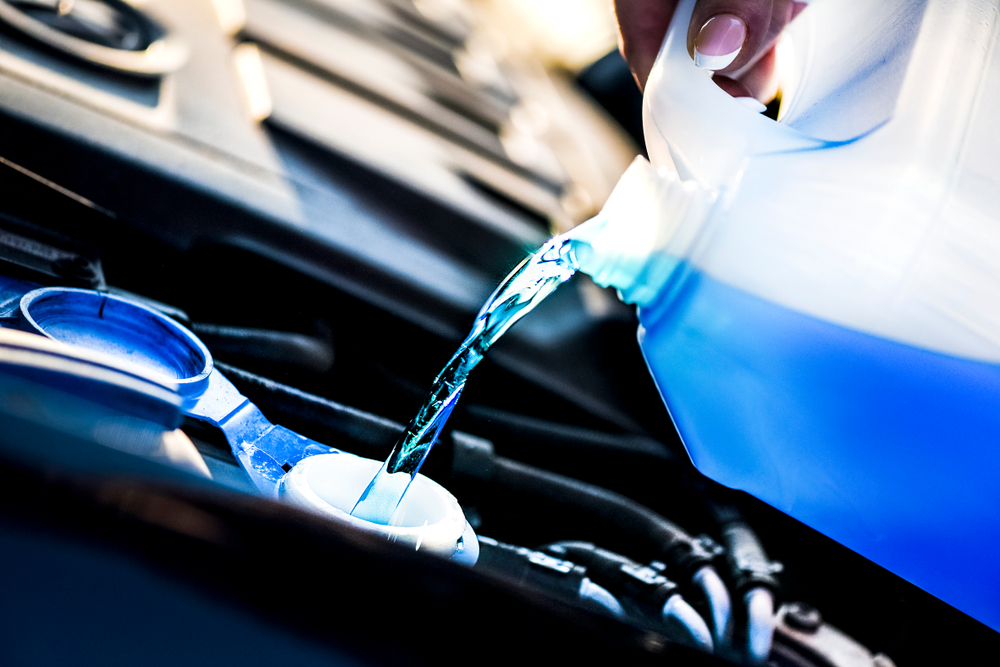Top 5 Cooling System Maintenance Myths Busted

Your vehicle’s cooling system is made up of many parts, all of which work together to maintain the temperature under the hood. Without the cooling system, your car’s engine would overheat or explode, making it an extremely important component that you shouldn’t overlook.
Originally published in 2014, this blog has been updated in 2020 to conform to changing manufacturer and industry standards.
How Your Cooling System Works
Your cooling system cools your engine in a sophisticated process, but here is a shortened version of how it works:
The liquid coolant draws heat from your engine. The water pump then pushes the coolant through a network of hoses to the radiator, where the liquid is cooled. The thermostat controls the temperature, blocking the coolant when the engine is too cold or letting it flow if the engine is too hot.
Battling Misinformation:
Your cooling system is important, but unfortunately there is plenty of misinformation available about how and when to get it serviced. In this blog, our auto experts tackle the most common cooling system misconceptions, and offer their advice on what to do instead.
Myth #1: The Cooling System Doesn’t Need Servicing
When you never see the system, it can be easy to overlook maintenance entirely. However, the truth is, there are far too many parts within your cooling system to skip regular service. In addition to the parts mentioned in our explanation above, your cooling system also includes:
- Radiator Fans
- Reserve Tank
- Bypass System
- Pressure Cap
- Freeze Plugs
A problem with any cooling system component can cause major damage to the engine if it isn’t cooling properly. If a freeze plug comes unplugged, for example, coolant would leak, thus overheating the engine, damaging your car or worse.
Myth #2: Small Leaks Don’t Matter
When freeze plugs wear out, or when a hose rusts, coolant can leak slowly from your car’s system. Leaks can also be caused by increased water pressure from overloading the system with coolant. Regardless of the culprit, leaks should be addressed immediately, to avoid serious damage to your engine.
Myth #3: You Just Need Water or Coolant
Your car’s cooling system requires a mixture of both water and coolant. This is because water regulates temperature very well—it can draw heat from the engine and cool quickly in the radiator. However, water’s properties cause some parts of the engine to corrode. If you use only water without coolant, your hoses and pipes will eventually rust, leading to bigger problems like leaks or system malfunction.
Coolant, also known as anti-freeze, protects your cooling system while aiding the water in absorbing heat from the engine. With the addition of coolant, water doesn’t corrode the system as much. In general, you should use a coolant to water ratio of 1:1.
Myth #4: All Coolants Are the Same
Depending on your car’s make and model, the coolant your system needs varies. Your local automotive repair shop can help you determine the best product for your system.
Myth #5: Flushing Is a Waste of Time
Like we mentioned before, water corrodes the inside of your vehicle’s cooling system. To counteract that, coolant is used to protect it. But, over time, coolant loses its protective qualities. Your coolant now can’t protect your system as well as it did two years ago. As your coolant ages, the aluminum parts of your car’s engine will start to corrode. The best way to prevent this is to flush your coolant when it gets too old. This can remove any debris from the cooling system and protect your engine for another couple of years.
Schedule an Appointment Today
At Christian Brothers Automotive, our auto care is centered around your life. We understand that your vehicle is an essential component of your daily routine; it’s what you rely on to get you and your family where you need to go. Whether you’re in need of a coolant flush, cooling system repair or another service entirely, our team is committed to your safety and convenience. Call or visit your local Christian Brothers Automotive today to see what happens when auto care and people care go hand-in-hand.


[1].jpg)
[2].jpg)
sunwash-tech-with-customer.png)
